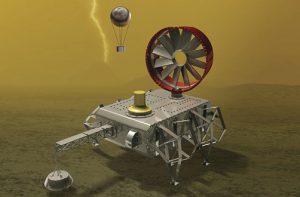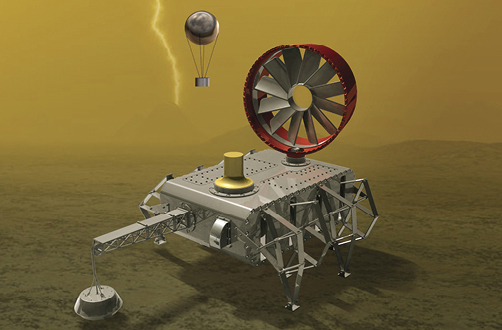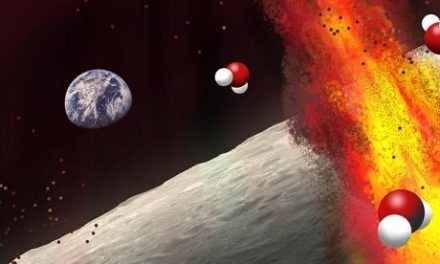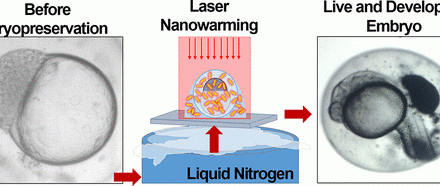
Credit: NASA/JPL-Caltech/NIAC
Venus’s extremely hostile surface environment, of crushing atmospheric pressure and temperatures of hundreds of degrees make survival a challenge for man or machine. Venus is the second largest terrestrial planet and Earth’s closest neighbor, but we have not sent a rover to explore the surface of craters, mountains, volcanoes and big lava plains for good reason. Sending a rover like the kind that is currently roaming around Mars is just not an option as the electronics onboard would melt almost instantly after landing on the inhospitable surface with 800 degrees Fahrenheit temperature and clouds of sulfuric acid. The Soviet Venera 13 lander that touched down in 1982, is the longest a spacecraft has ever survived on Venus, at a meager 127 minutes.
Researchers from the Jet Propulsion Laboratory are making a prototype of the Automaton Rover for Extreme Environments (AREE) which is intended to land and roam the rough terrain of Venus. Now in its second year of development and still far from a planned mission, the AREE prototype is being funded by the Nasa Innovative Advanced Concepts (NIAC) program. According to the Space Journal Room, the AREE draws inspiration from mechanical computers, the type which use levers and gears to make calculations rather than electronics.
Examples of these mechanical computers include the ancient Greek Antikythera automaton, built 2,300 years ago that accurately predicted past and future astronomical events like eclipses. Or the 19th century invention by Charles Babbage named the Difference Engine, which was used for calculating algebraic equations known as polynomial functions. The idea of using these retro mechanical computers is to make the rover totally mechanical and avoid the use of electronics that will quickly melt. Even with this approach, Dr. Jonathan Sauder from the Nasa Jet Propulsion Laboratory, who proposed the idea in 2015 and is leading the AREE build says that “with a fully mechanical “clockwork like” rover, you might be able to survive as long as a year.”
The “clockwork” rover would rely on wind energy harvested from its turbine for power and uses a tank-like tread to navigate the rugged Venusian surface. One hurdle the team will need to overcome is how to transmit any data a rover could gather while on Venus’s surface with no electronics. The answer might be one of a couple age-old technologies. The rover could collect the climate and seismic data from the Venus’ surface, recorded on phonograph-style records that periodically would be lifted by a balloon to an overhead drone. Another option would be to have an orbiting spacecraft and the rover communicate by way of pinging radar signals (Morse code like) at one another in a method that is described as flashing radar signals back and forth, instead of flashing light.










